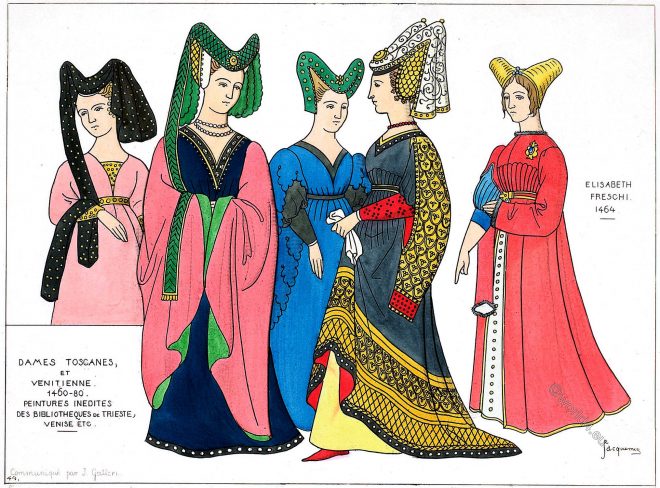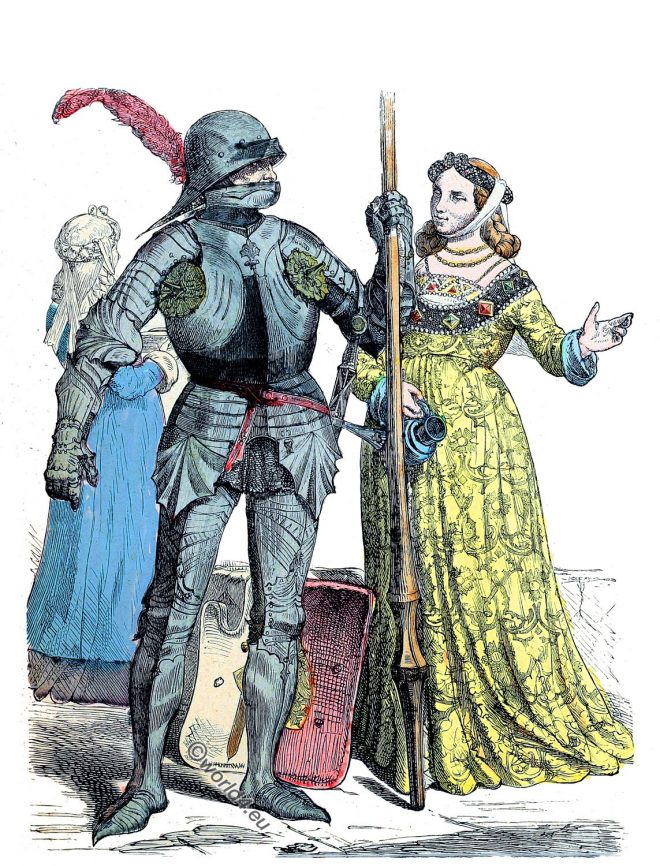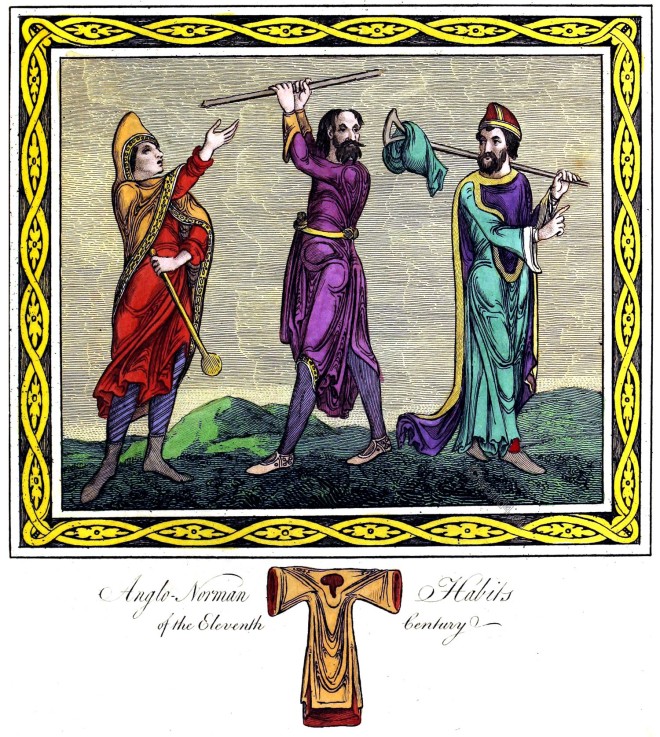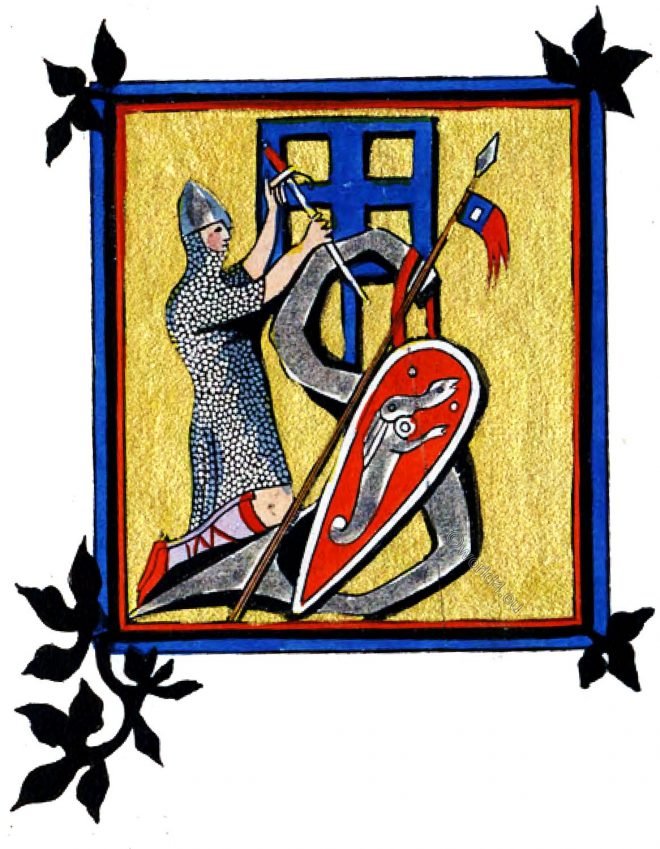Tuscan and Venetian Ladies 1460-80. Unpublished paintings from the Libraries of Trieste, Venice etc.
Tag: Medieval costume
Medieval costume history. The period between the end of antiquity and the beginning of modern times about the 6th to the 15th century. It includes as superordinate, the Byzantine, Merovingian, Carolingian and Burgundian costume eras. Therein are the Gallic, Celtic, English-Saxon, Normans, Gothic, Romanesque included.
The rebuilding of the city of Troy by Priam.
The subject of the illumination is the rebuilding of the city of Troy by Priam formed part of a noble manuscript volume, executed in the reign of Louis XII. Parts are curious examples of the domestic architecture of the Middle-Ages.
England Anglo-Norman fashion history, 1087-1100.
Fashion and costume history in the Reign of William II, called William Rufus. Medieval England Anglo-Norman 1087-1100.
German knight and noblewoman of the 15th century.
German knight and noblewoman of the 15th century. Costume and fashion history of the middle ages. The history of costumes. XV. and XVI. century.
The dress and decorations of the Anglo-Saxons. 8th to 11th century
The dress of the Anglo-Saxons. 8th to 11th century
The Art of cutting in England. The Norman Period.
The conquest of England by the Normans, under the command of William the Conqueror, effected a most important change in the laws, manners, customs, and costume of the inhabitants.
German court costumes with bells. First half of the 15th century.
German court costumes c. 1430. Fashion of wearing bells in this manner originated in Germany, and was one of the many fanciful details introduced at the time of Anne of Bohemia’s marriage in 1383.
The Norman conquest. A critical inquiry into ancient armour.
The Norman conquest. William the Conqueror. 1066. The state of Armour in Britain when William led his army of Normans.
Old Age and Poverty from famous The Romance of the Rose.
Dresses and Decorations of the Middle Ages by Henry Shaw
King Alfred’s Jewel, and the Ring of King Athelwulf.
The most ancient specimen of what to all appearance is a true enamelled work is the ring of Athelwulf, the father of Alfred, preserved in the British Museum, and engraved on the accompanying plate.










